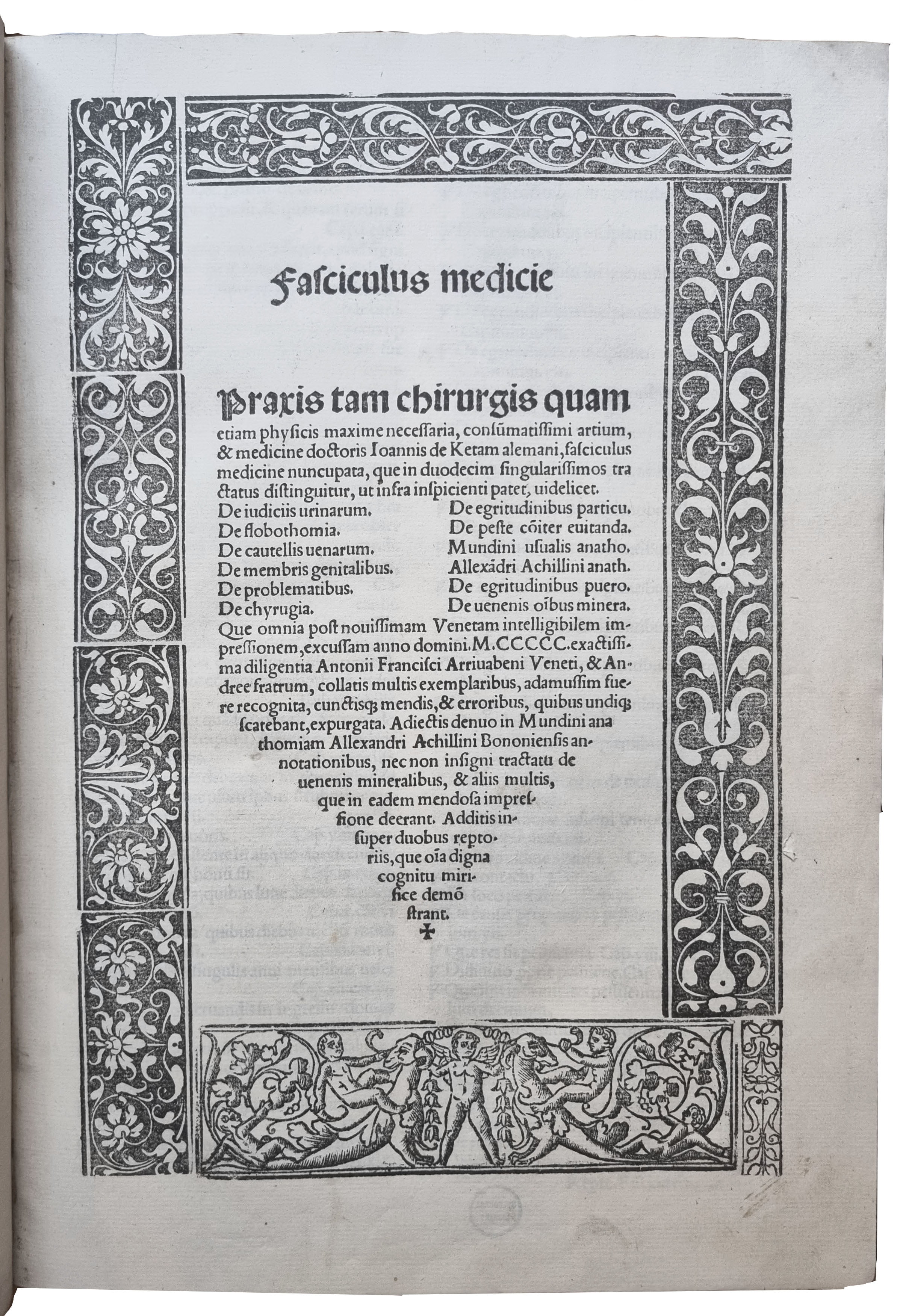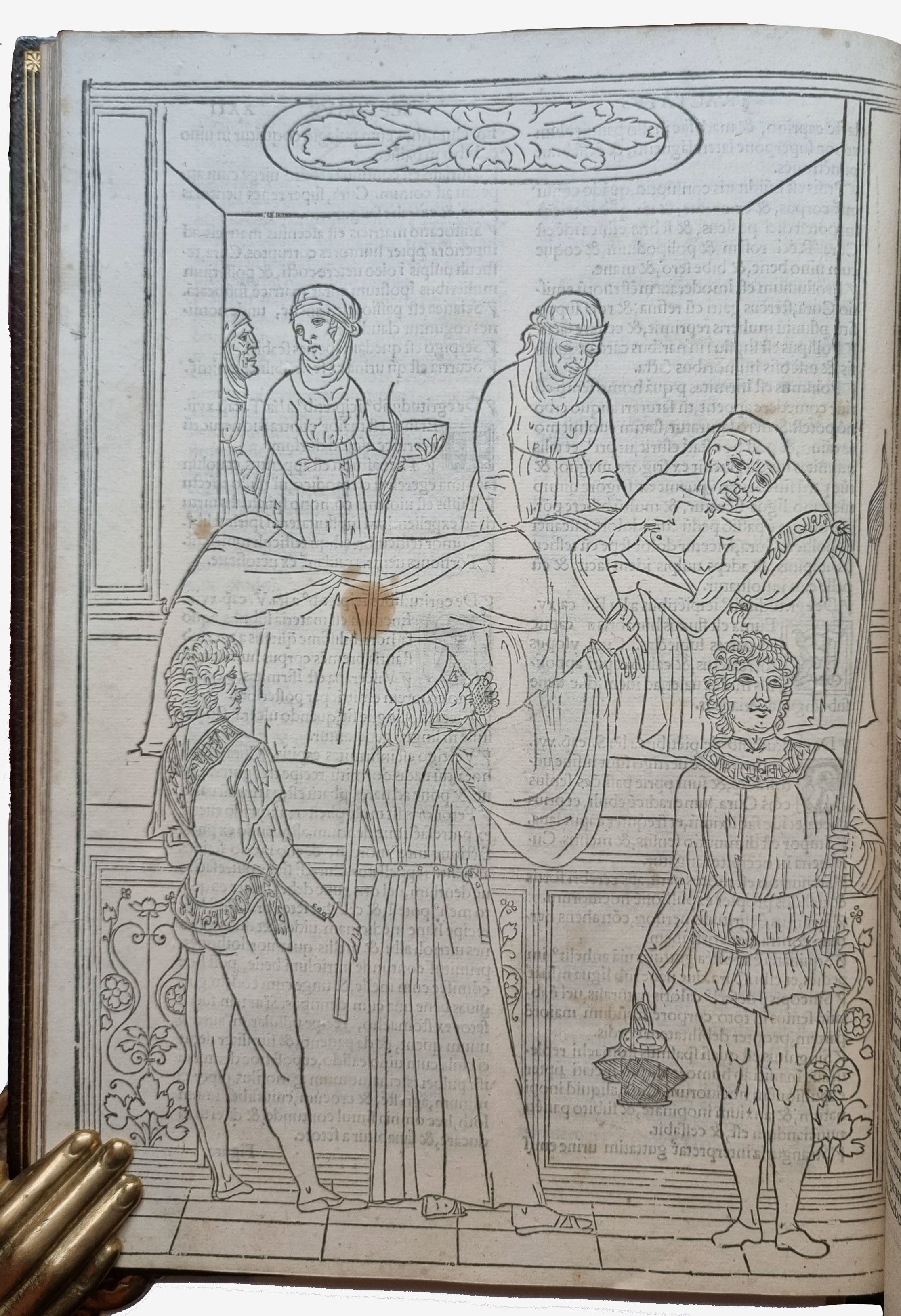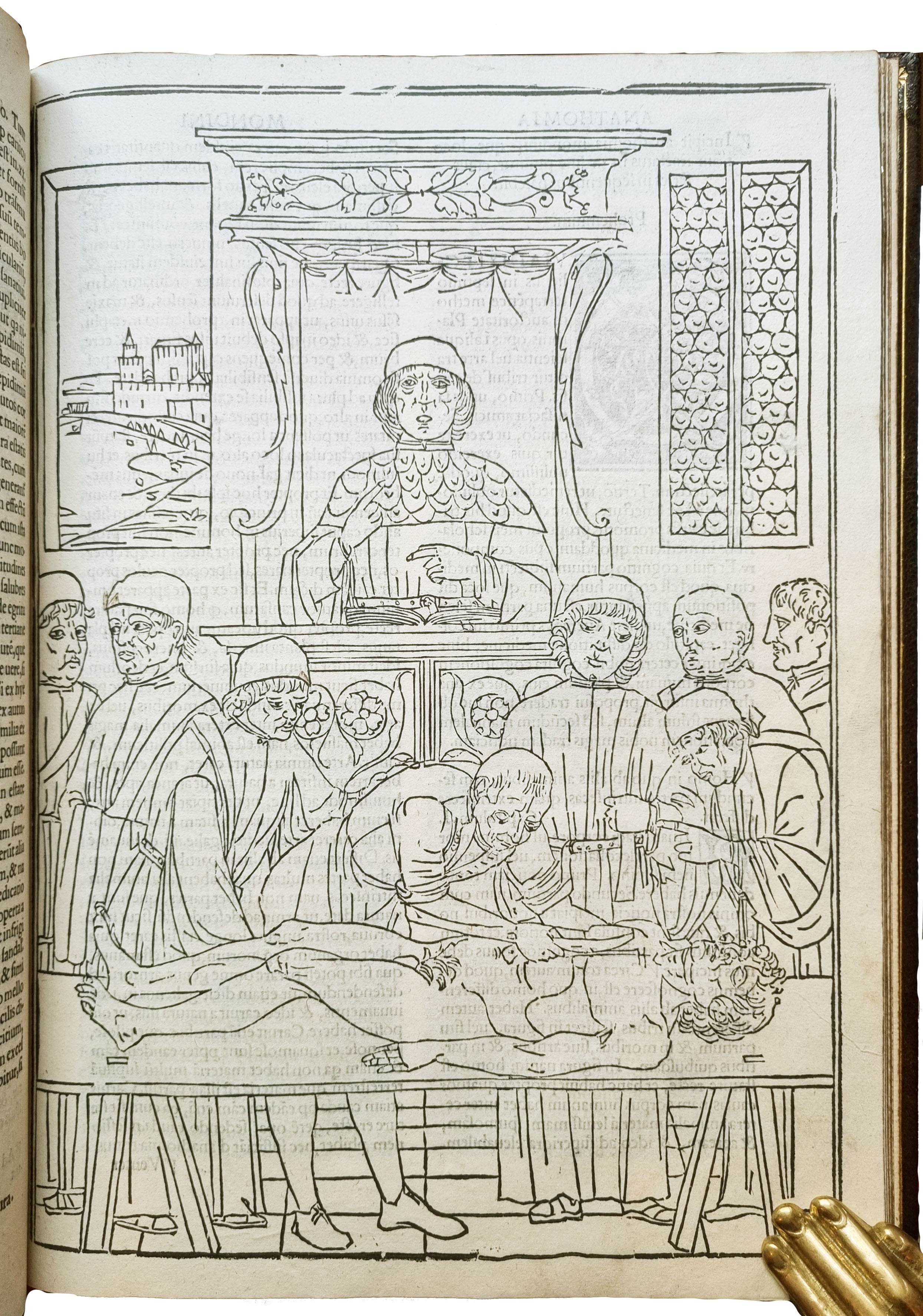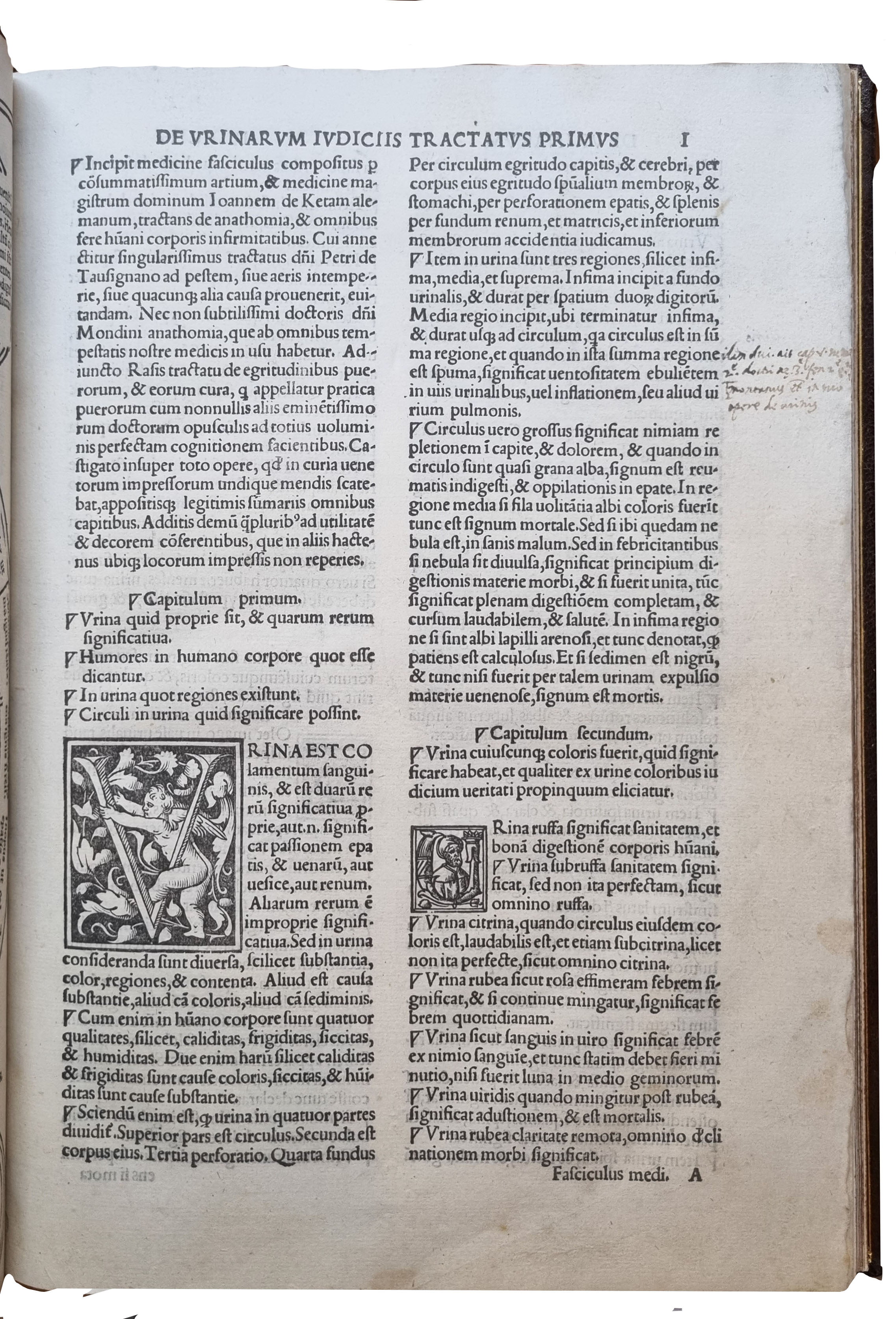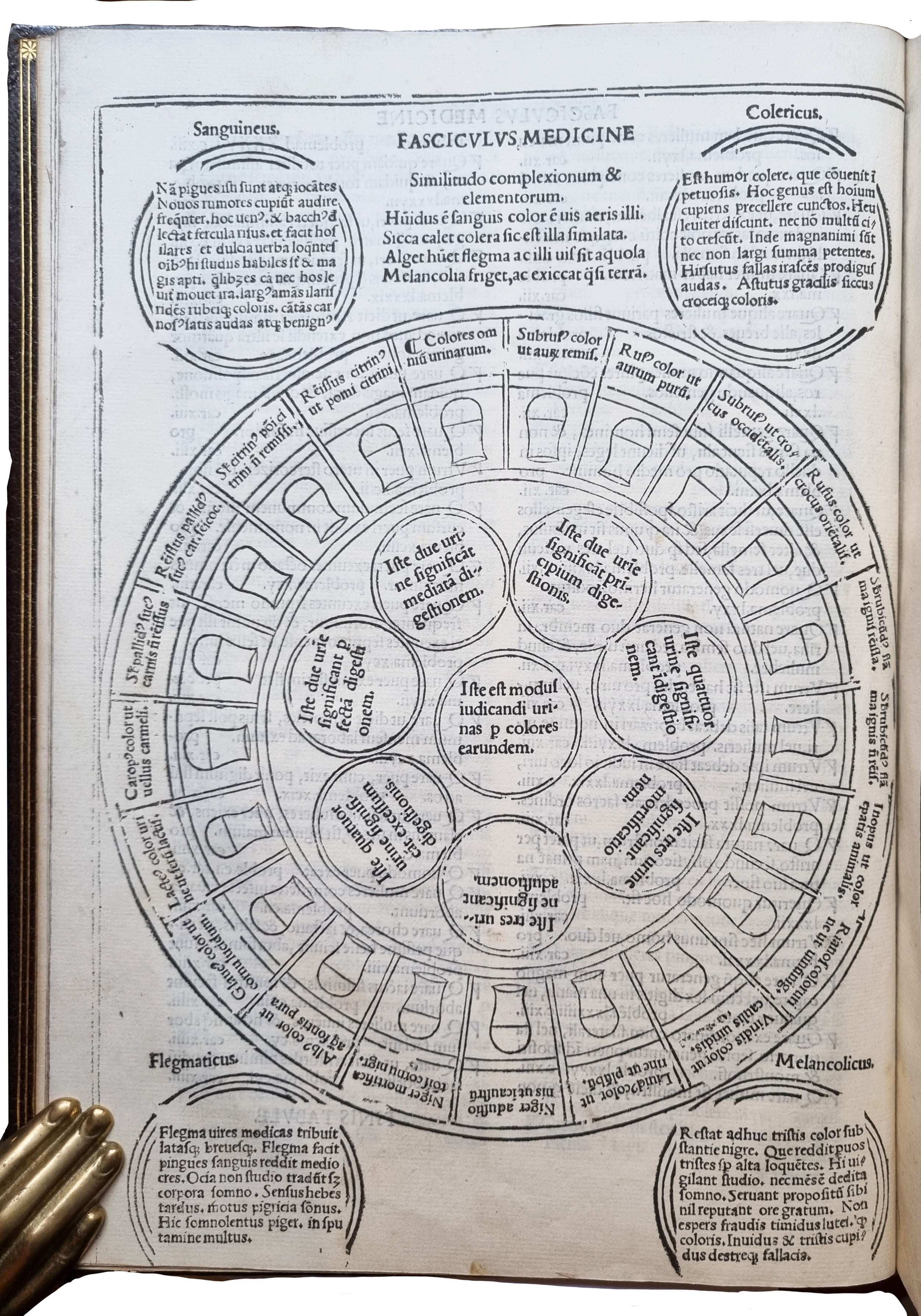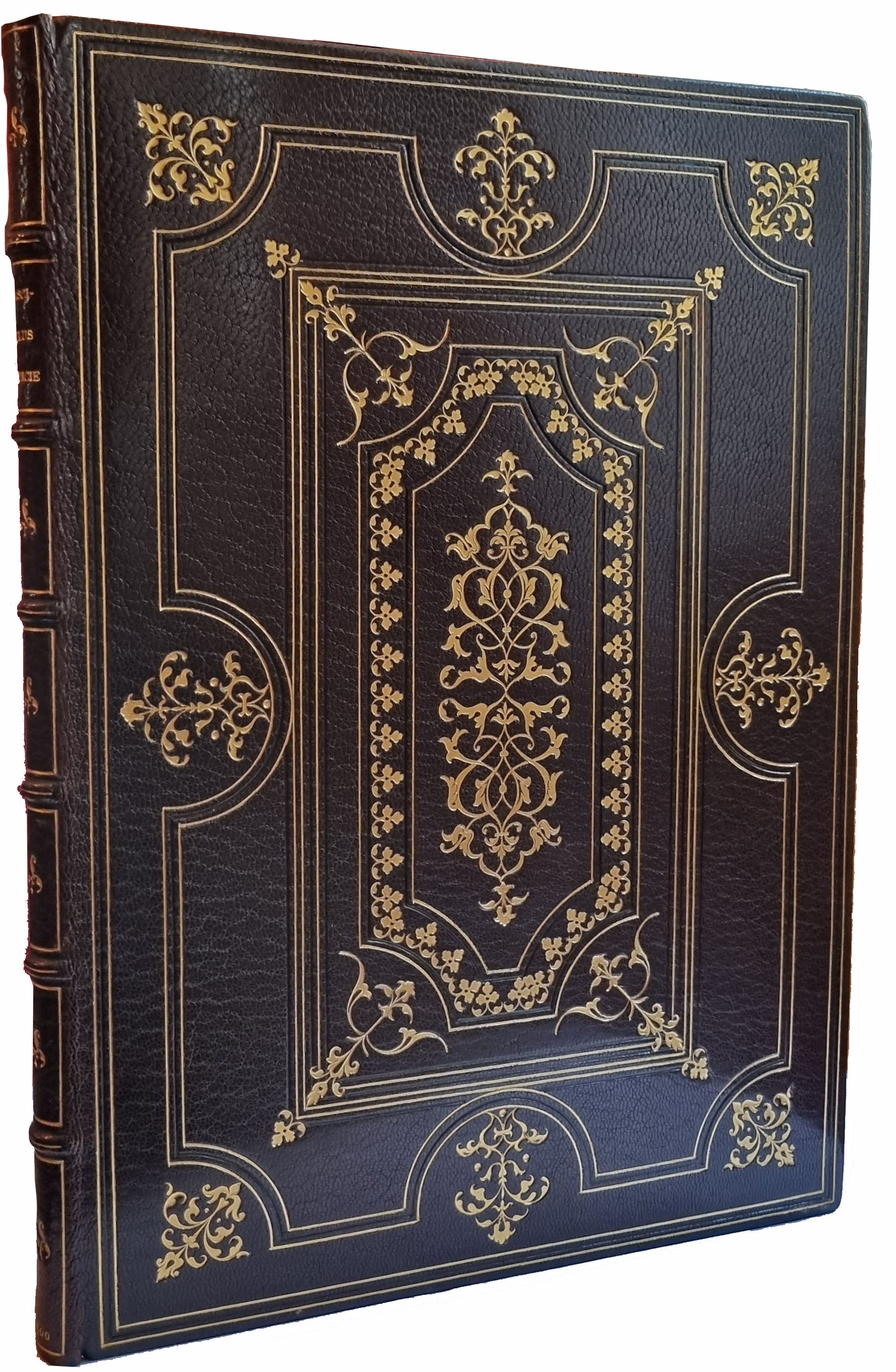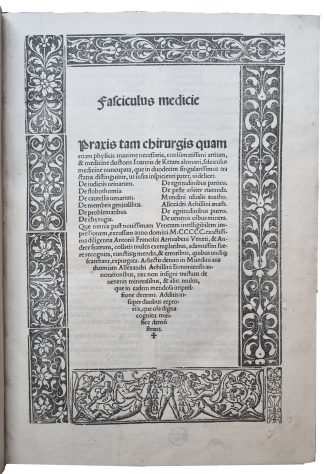KETHAM, Johannes de
FIRST MEDICAL BOOK WITH REALISTIC FIGURES
Fasciculus medici[n]e
Venice, Cesare Arrivabene, 1522£29,500.00
Folio, ff. (4), 58 (i.e. 59), (1). Roman letter; title within decorative border, printer’s device on penultimate verso, historiated and black-on-white decorated initials, ten detailed and neat full-page illustrations; a few dust-soiled leaves, minor oil splash on 23r-26v, just affecting one woodcut. A fine copy in crushed dark morocco gilt by Gruel, a. e. g.; several contemporary and late sixteenth-century Italian marginalia, manicula and emendations by different hands; small blue stamp of the Selbourne Library on title verso and foot of 51r. Preserved in slipcase.
Early edition of a masterpiece of the Renaissance art of the book, revised and expanded after the princeps of 1491. Little, if anything, is known about Kentham, who has been identified as Johannes von Kirchheim, a professor from Swabia teaching medicine in Vienna around 1460. Rather than the author of this influential collection of medical essays, he appears to be the owner of the manuscript used by the printer of the first edition who mistakenly took him for the compiler.
The work enjoyed great success and was soon translated into Italian, German and Spanish. This imprint includes Mondino de Luzzi’s Anatomia and the treatise on venoms of his pupil and commentator, Alessandro Achillini; most importantly, it retains all the superb apparatus of illustrations designed for the Italian translation of the Fasciculus published in Venice in 1493 by the de Gregorii brothers, incorporating also the minor changes introduced in the later reprints of 1500 and 1513.
“The typography and artistic qualities of this edition [Venice, 1493] of the Fasciculus make it of interest far beyond the world of medicine. It was the first printed medical book to be illustrated with a series of realistic figures: these include a Zodiac man, bloodletting man, planet man, an urinoscopic consultation, a pregnant woman and notably a dissection scene which is one of the first and finest representation of this operation to appear in any book (…) Most of these figures have medieval prototypes, but they are here designed by an artist of the first rank. His identity has never been discovered; it has been suggested – wrongly – that he was the Polifilo master; but he was certainly an artist close to the Bellini school.” PMM, p. 20.
Uncommon. Not in BM STC It. or Adams. Durling, 2660; Heirs of Hippocrates, 72; Essling, 592; Sandler 3753; PMM, 36 (1493/94).In stock


